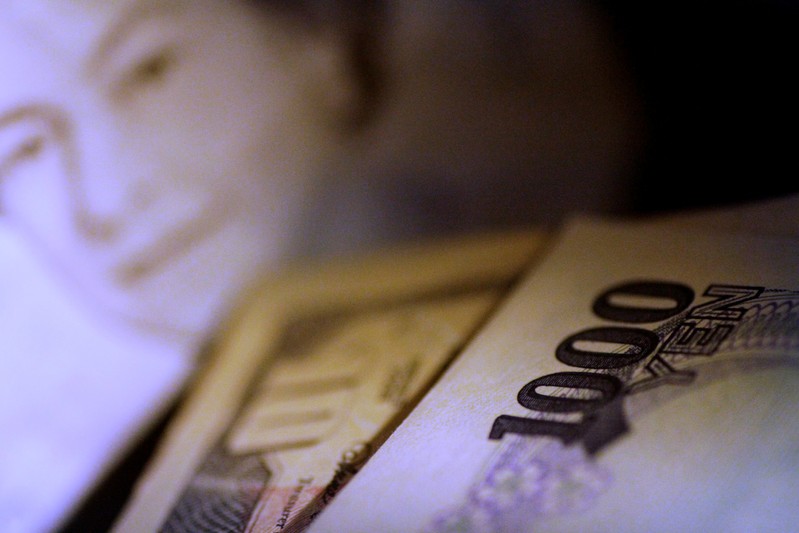
A Japan Yen note in front of U.S. Dollar and British Pound Sterling notes are seen in this June 22, 2017 illustration photo. REUTERS/Thomas White/Illustration
March 12, 2019
By Kate Duguid
NEW YORK (Reuters) – Sterling whipsawed after Prime Minister Theresa May’s Brexit deal was defeated in Parliament on Tuesday, leaving the currency unchanged on the day, while the dollar fell against the euro as U.S. consumer prices disappointed.
The British Parliament rejected May’s deal to quit the European Union for a second time, deepening the country’s worst political crisis for generations, 17 days before the planned departure date.
Sterling was about half a percent weaker at $1.307 after trading in a wide range over the course of the day.
“The market had mostly priced in a defeat which is why the pound is not crossing key psychological levels of support against the dollar,” said Karl Schamotta, director of foreign exchange strategy and structured products at Cambridge Global Payments. “This is putting us on course for a delay in the Brexit process.”
There is no obvious way forward for Britain: exiting the EU without a deal, delaying the March 29 divorce date, a snap election, or even another referendum are all now possible. May might try a third time to get parliamentary support in the hope that hardline euroskeptic lawmakers in her Conservative Party might change their minds if it becomes a choice between her withdrawal plan or Britain’s remaining in the EU.
“The issue appears to be resolving itself as the plan was defeated by a narrower margin than in January,” Schamotta said. “That gives May room to negotiate further with the EU and bring forward another series of votes. This does not precipitate a no-confidence vote, or a successful no-confidence vote, in Theresa May’s government and sets the stage for the pound to rise in the coming sessions.”
Also on Tuesday, the dollar was weaker against the euro after U.S. consumer price data showed that inflation remains low despite a tight labor market, bolstering the likelihood the Federal Reserve would keep interest rates unchanged.
The U.S. consumer price index rose for the first time in four months in February, but the pace of the increase was modest, resulting in the smallest annual gain in nearly 2-1/2 years.
The dollar index, which measures the greenback against a basket of six rivals, fell and was last down 0.29 percent at 96.932
The euro strengthened against the dollar, last trading at $1.1297 up 0.44 percent. Against the Japanese yen, the dollar was 0.09 percent stronger at 111.29 yen, paring earlier gains.
(Reporting by Kate Duguid and Gertrude Chavez; Editing by Steve Orlofsky and Leslie Adler)
